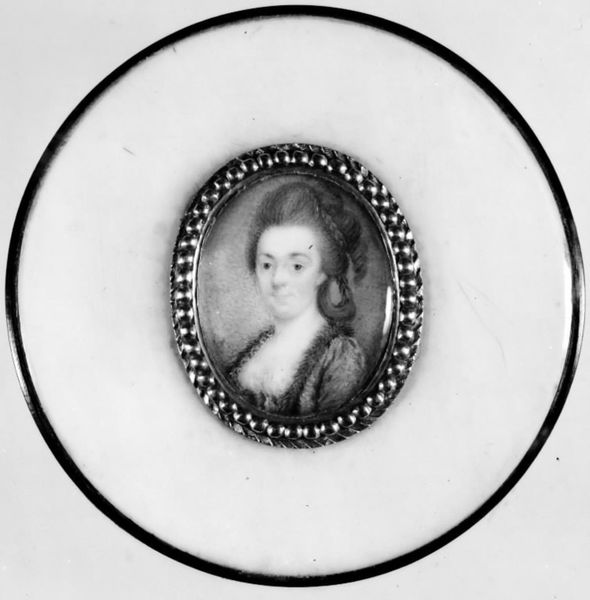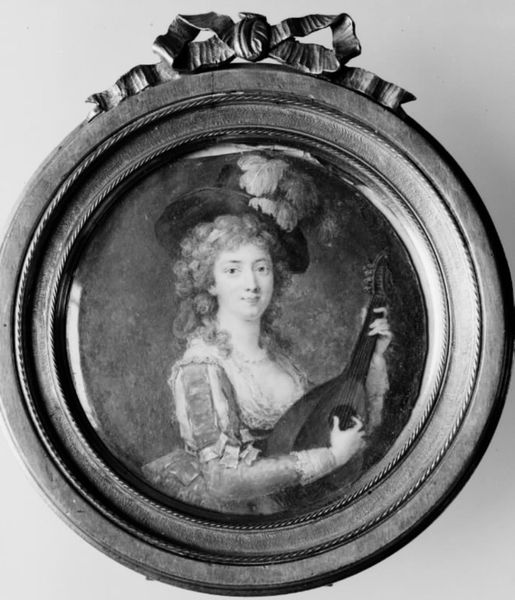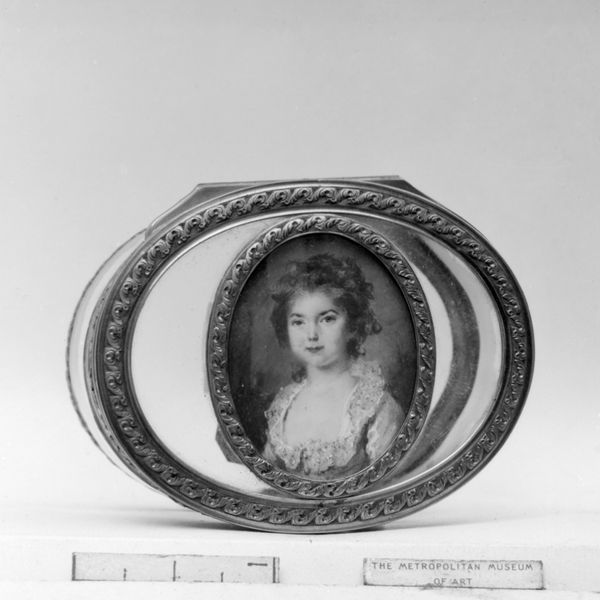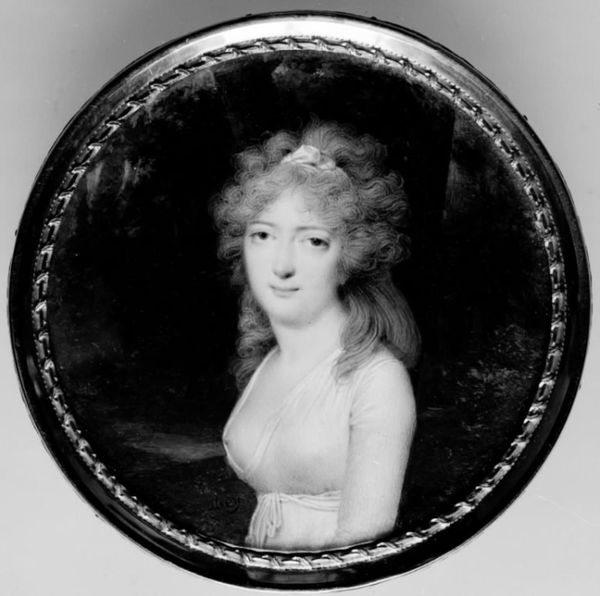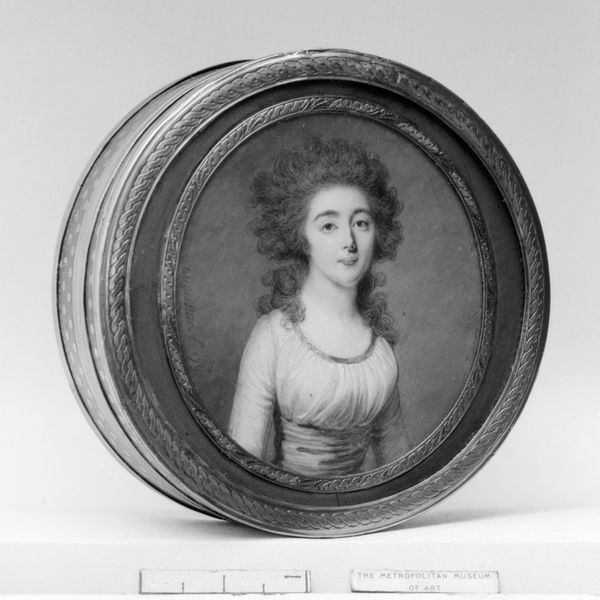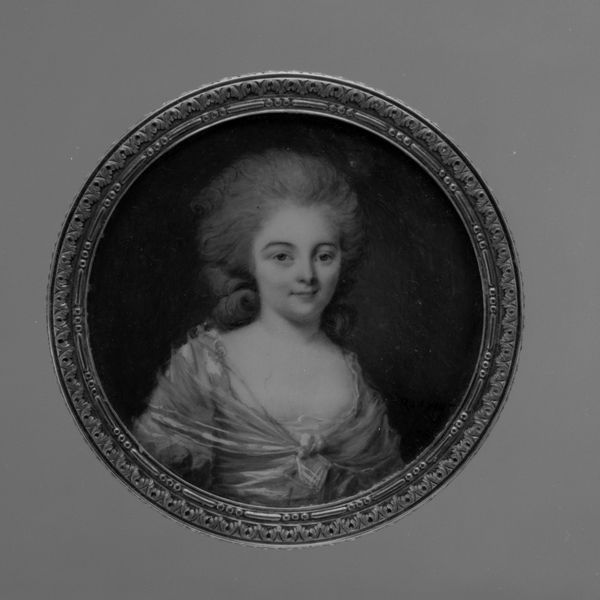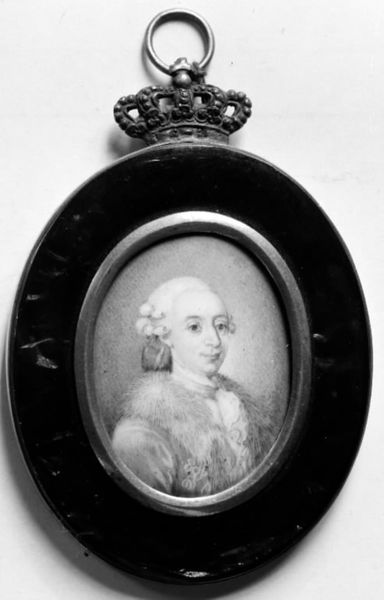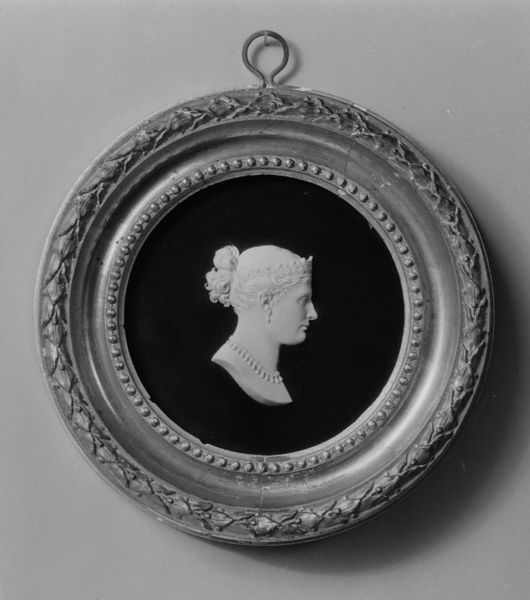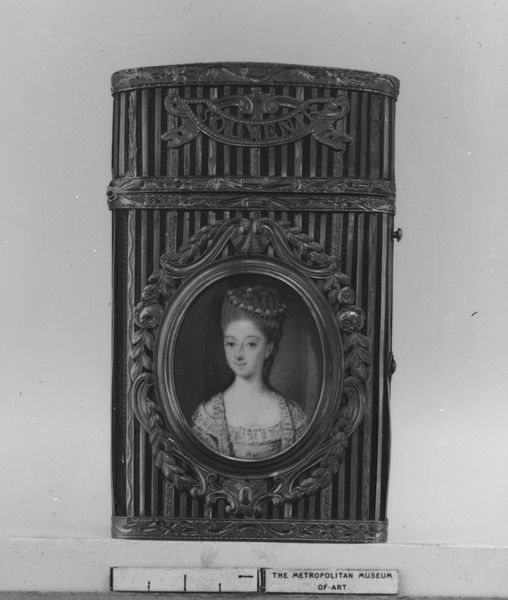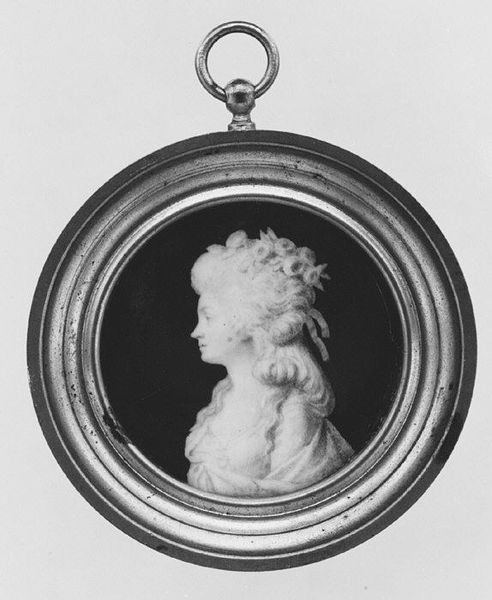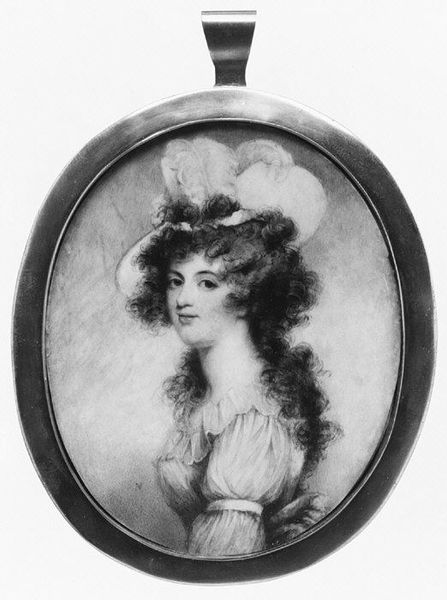
painting
#
portrait
#
black and white photography
#
painting
#
black and white
#
monochrome
#
miniature
#
rococo
Dimensions: Oval, 1 3/8 x 1 in. (35 x 27 mm)
Copyright: Public Domain
Editor: Here we have Arnaud Vincent de Montpetit’s “Portrait of a Woman as Diana,” made in the 1760s. It's a tiny painting, housed in the Metropolitan Museum. It's very delicate, almost ethereal, but what strikes me is the contrast between the subject's soft features and the assertiveness implied by the Diana reference. How do you read this portrayal, and the choice to depict her as a mythological figure? Curator: That's a fascinating observation. De Montpetit places this woman within a complex web of societal expectations and mythological archetypes. Diana, the goddess of the hunt and the moon, represented independence and strength. Yet, consider the context: it's the 1760s. Aristocratic women were often confined by social norms, their power largely derived through marriage or family. Dressing her as Diana – is this about subversion or aspiration? Is it exploring themes of female agency and the limited roles afforded to women? Editor: That tension is interesting! It feels like a tightrope walk between rebellion and conformity. Could it also be read as simply fashionable, a common trope to elevate the sitter? Curator: Fashion definitely played a role. The Rococo period loved theatricality and embellishment. But I would push us to consider further what such embellishment *meant*. The artist makes a specific decision – *why* Diana? Whose narrative are we reinforcing, and are there nuances of feminine power or societal critique here that we can disentangle? Editor: So, beyond just the surface-level beauty, there's a potential commentary embedded in the portrait’s symbolism, related to the societal expectations of women? Curator: Precisely. And that's what makes it engaging, isn't it? How a seemingly simple image can become a portal to larger questions about identity, power, and representation. Editor: That definitely gives me a lot to think about. I initially saw it as a straightforward portrait, but now I see so much more complexity.
Comments
No comments
Be the first to comment and join the conversation on the ultimate creative platform.
